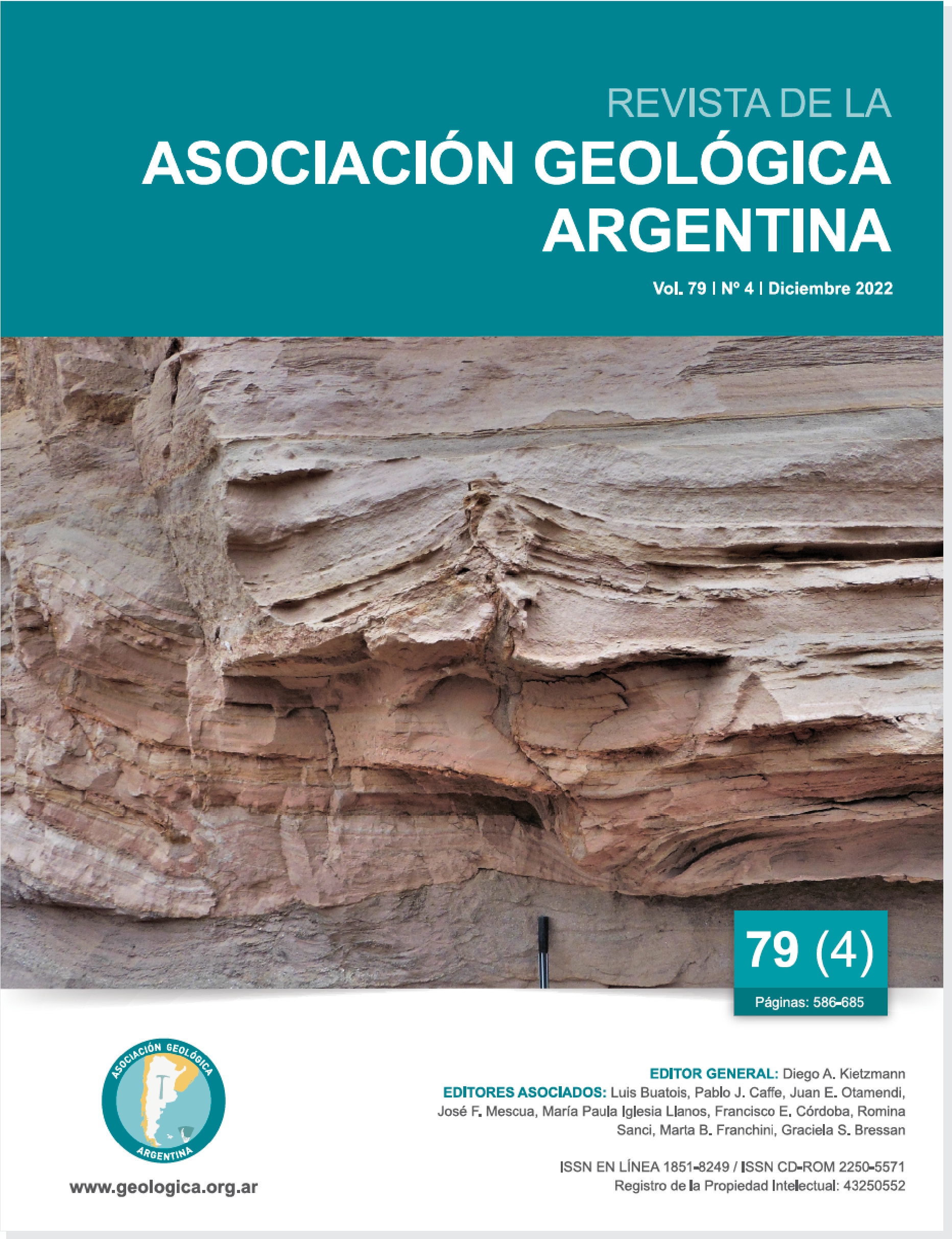Hydrodynamics, hydrochemistry and occurrence of uranium in the Ituzaingó and Salto Chico Aquifers, Entre Ríos Province
Main Article Content
Abstract
Ituzaingó, Salto Chico and Ubajay Aquifers are the most important hydrogeological units in the Chaco-paranaense region because they are among the most productive, provide high quality fresh water and supply agriculture, industry and human consumption. From the hydrodynamic analysis at piezometric level, a network of groundwater flow was defined ―the groundwater divide―. The hydraulic head does not exceed 60 masl; therefore, potential fluvial recharge processes may be proposed with more extensive and deeper groundwater flows. This would increase the water-rock contact time, which would impact on salinity. A large extension of the Aquifer region has groundwater showing a salinity level lower than 2000 mg/l, even in the western areas, where the Salto Chico and Ubajay Aquifers rarely exceed 1000 mg/l. There sodium bicarbonate facies predominate; followed by the calcium bicarbonate facies, which are almost at the same level as the sodium chloride-sulfate ones. From a regional perspective, the average value of nitrates is close to 10 mg/l; there is a low concentration of arsenic (0.1 - 0.2 mg/l) and iron (0.2 - 0.4 mg/l), which are only present punctually. Uranium has been detected as a trace, showing a regional distribution and average values of 25 μg/l (3 μg/l minimum and 101μg/l maximum), so it can be considered almost a minority species. The positive and significant correlations of uranium with other components are TDS (0.62), SO42- (0.61) and Na+ (0.64). They coincide in their regional distribution ―center-north of the province of Entre Rios― in a clear association of hydrodynamic and hydrochemical processes.
Article Details

This work is licensed under a Creative Commons Attribution-NonCommercial 4.0 International License.
Nota de copyright
Los autores conservan los derechos de autor y garantizan a la revista el derecho de ser la primera publicación del trabajo licenciado según una licencia de atribución Creative Commons que permite a otros compartir el trabajo con el reconocimiento de la autoría y de la publicación en la que se publicó por primera vez.
Declaración de privacidad
Los nombres y direcciones de correo electrónico introducidos en esta revista se usarán exclusivamente para los fines declarados por esta revista y no estarán disponibles para ningún otro propósito u otra persona.

